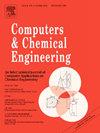从VIT数据中提取关键的时间和循环特征,利用注意力机制预测锂离子电池的膝点
IF 3.9
2区 工程技术
Q2 COMPUTER SCIENCE, INTERDISCIPLINARY APPLICATIONS
引用次数: 0
摘要
锂离子电池寿命的准确预测对于降低风险至关重要,因为电池循环实验既耗时又昂贵。尽管如此,很少有研究有效地利用循环数据,最小化信息损失和优化输入大小。为了弥补这一差距,我们提出了三个模型,将注意力层整合到一个基本模型中。时间注意力有助于解决递归神经网络固有的梯度消失问题,为后续网络提供可管理的输入大小。应用于上下文向量的自关注,称为循环关注,允许模型有效地识别捕获循环中大部分信息的关键循环,战略性地减少输入大小。通过使用多头注意力,所需的输入大小从100个周期减少到30个周期,比单头方法显著减少,因为每个头部从不同的角度强调不同的关键周期。我们的增强模型显示,仅使用前30个周期,回归性能就提高了39.6%,大大提高了我们之前的方法。本文章由计算机程序翻译,如有差异,请以英文原文为准。
Extracting key temporal and cyclic features from VIT data to predict lithium-ion battery knee points using attention mechanisms
Accurate prediction of lithium-ion battery lifespan is crucial for mitigating risks, as battery cycling experiments are time-consuming and costly. Despite this, few studies have effectively leveraged cycling data with minimal information loss and optimized input size. To bridge this gap, we propose three models that integrate attention layers into a foundational model. Temporal attention helps address the vanishing gradient problem inherent in recurrent neural networks, enabling a manageable input size for subsequent networks. Self-attention applied to context vectors, termed cyclic attention, allows models to efficiently identify key cycles that capture the majority of information across cycles, strategically reducing input size. By employing multi-head attention, required input size is reduced from 100 to 30 cycles, significant reduction than single-head approaches, as each head accentuates distinct key cycles from various perspectives. Our enhanced model shows a 39.6 % improvement in regression performance using only the first 30 cycles, significantly advancing our previous method.
求助全文
通过发布文献求助,成功后即可免费获取论文全文。
去求助
来源期刊

Computers & Chemical Engineering
工程技术-工程:化工
CiteScore
8.70
自引率
14.00%
发文量
374
审稿时长
70 days
期刊介绍:
Computers & Chemical Engineering is primarily a journal of record for new developments in the application of computing and systems technology to chemical engineering problems.
 求助内容:
求助内容: 应助结果提醒方式:
应助结果提醒方式:


